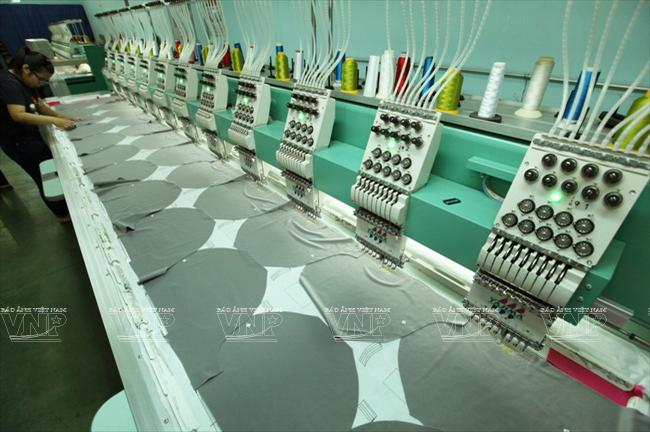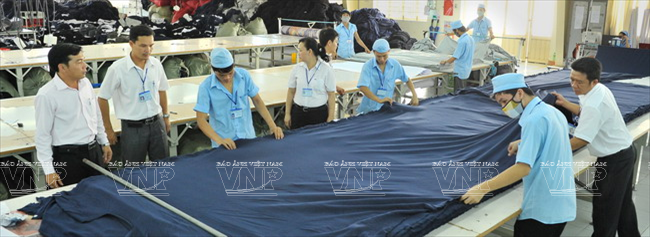(VOVworld) – Vietnam and 11 other countries’ conclusion of negotiations for the Trans-Pacific Partnership agreement has given Vietnam opportunities to develop its economy. Vietnam’s garment and textile sector is one industry which stands to gain the most advantage from the TPP, while also presenting challenges. What Vietnamese garment and textile firms are concerned about now is input material supply sources for export production.
Vietnam now has about 2,000 textile firms but few of them can be directly involved in designs and production to sell products to foreign partners. They mainly do outsource work for foreigners.
 |
| Vinatex focuses on projects to produce auxiliaries and materials in the service of production. |
But when Vietnam officially joins the TPP, domestic enterprises should step up the free-on-board production practice which means to take the initiative in material resources, increase of selling the finished products, and reducing processing.
Nguyễn Hữu Tòan, deputy director of Sài Gòn Garment Company 2, said that Vietnamese textile firms’ biggest concern was to set up material zones for the manufacturing for exports and local consumption.
Tòan said that “the biggest difficulty is material resources which are mainly imported or bought from illegal sources. Vietnam’s resources in locally-made fashion fabrics haven’t met domestic need.”
When TPP takes effect, to enjoy tariff preferences Vietnam’s garment and textile products should first meet a certain rate over the localization of spinning, textile, and dyeing materials. The sector should also prepare capital and land for the construction of factories that can ensure product quality and the surrounding environment in line with the trade deal’s commitments.
 |
| Analysing the fibers at the Ho Chi Minh City’s Textile Research Sub-Institute. |
Lý Hoàng Nguyên, director of Nguyệt Nhân Technology and Service Trading Company, said “dyeing is an indispensable part in knitting a piece of fabric. But it requires a great amount of investment in building a dyeing factory, which can cover up to 10ha. It obviously goes beyond the capacity of a small or medium sized enterprise. I propose that the government and local administrations support these enterprises.”
Phạm Xuân Hồng, President of Ho Chi Minh City’s Association of Garment, Textile, Embroidery, and Knitting, said the government has been outlining programs in material support for the sector while foreign companies have conducted surveys in preparation for investment in material and auxiliary material zones.
Hồng said that “Vietnam began preparations a couple of years ago but the production of materials and raw materials remains slow. Although the scale of the production has been expanded, it can only meet up to 25%. The state has encouraged both domestic and foreign investment in the field hoping that linking these resources will increase output.”
 |
| Nha Be Corporation always uses high quality material resources to produce exports to meet the demand of foreign customers. |
The changes that Vietnam expects from the TPP are significant and challenging. Vietnam will have to undertake some difficult domestic reforms to meet the TPP’s intellectual property rules and labor and environmental standards to fully gain TPP advantages over their rivals in Central and Southeast Asia.